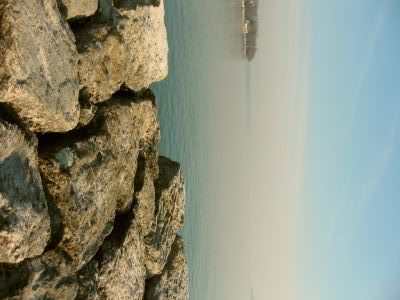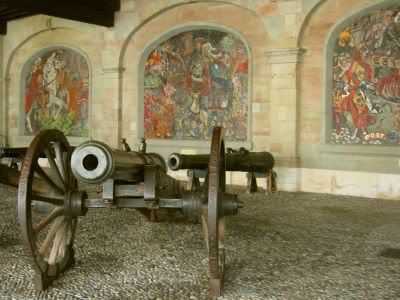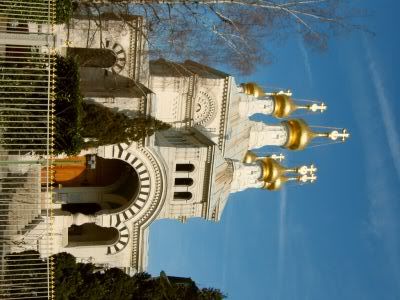
Lake Geneva is the second largest freshwater lake in central Europe (after Lake Balaton), divided between France and Switzerland. Geneva’s lakefront is one of the city’s greatest assets.

As you stroll down the lakeside quays (picture taken at Quai du Mont Blanc), you can enjoy the serenity and cold morning breeze.

As for what’s on the water - swans, ducks and diving birds cohabit with a multitude of brightly colored sailing boats just waiting for a regatta.

Distinguished linguist, outstanding horseman and musician, Charles d'Este-Guelph, Duke of Brunswick, was also eccentric and paranoiac. Born in 1804, dethroned and chased from his country in 1830, he took refuge in Paris. A talented investor, he amassed a tremendous fortune there. But he spent the last three years of his life in Geneva, where he died in 1873, leaving the city a tidy sum of money. One of the terms of his will specified that it was to build 'a mausoleum in an eminent and worthy location, executed according to the established concept by the finest artists of the time.'

A symbol of the Geneva watch industry, the famous Flower Clock, located at the edge of the English Garden since 1955, is a masterpiece of technology and floral art.

The Jet d'Eau, or water-jet, is one the most famous landmarks of the city of Geneva. Five-hundred litres of water per second are jetted to an altitude of 140 metres at a speed of 200 km per hour. Situated at the point where Lake Geneva empties into the Rhone River, it is visible throughout the city and from the air, even when flying over Geneva at an altitude of 10 km.

As the sun shone, a rainbow hovered behind the powerful jet of water.

Another picture of the quay.

The Lake of Geneva is a true inland sea making possible a wide range of cruises : cruises for one hour, one day, one evening, gourmet cruises and dancing cruises.

On the other side of Quai du Mont-Blanc, sitting on the Quai Gustave-Ador, from which one can enjoy a good view of the jet.

The first phase of the Cathedrale St Pierre's construction dates back to the year 1160 and lasted nearly a century. A series of fires, led to reconstuctions and restorations, modifying its original design.

One hundred fifty seven steps lead to the summit of the cathedral's north tower and to a fabulous panorama overlooking the city and the lake.

In the middle of the 16th century, the advent of the Reformation, with its philosophy of austerity, upset the entire interior of the building. All ornaments were removed and the colored decors whitewashed. Only the stained glass windows were spared.

The Old Arsenal, dating from the beginning of the 17th century, was originally a granary before being transformed into an arms depot, which remained as such until 1877. In addition to the cannons, the archway contains three remarkable mosaic frescoes.

In 1859, the many Orthodox Russians living in Geneva were given permission to build their church. Construction of the Russian Church lasted three years and in 1866, resulted in a pure masterpiece in the Byzantine Muscovite style.

Geneva's international character makes it an ideal place for cultures to mix in a tolerant cosmopolitan environment. More information : http://www.geneva.ch/

No comments:
Post a Comment